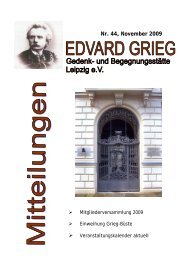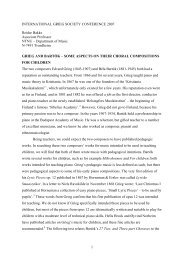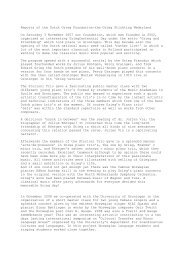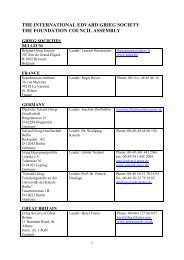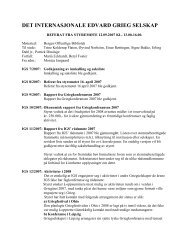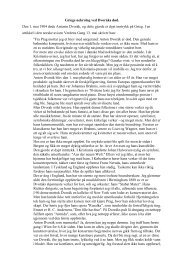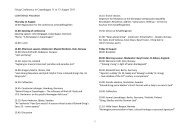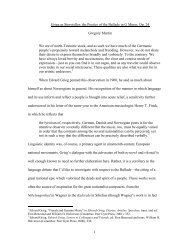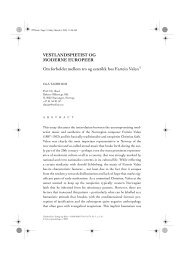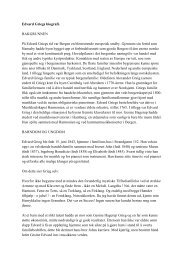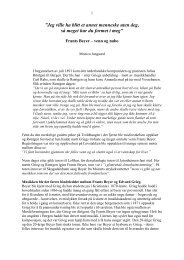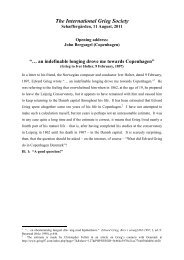Gregory Martin - paper 2009 - Grieg Society
Gregory Martin - paper 2009 - Grieg Society
Gregory Martin - paper 2009 - Grieg Society
You also want an ePaper? Increase the reach of your titles
YUMPU automatically turns print PDFs into web optimized ePapers that Google loves.
Such a layout leads our attention to a subtle, more subcutaneous aspect of <strong>Grieg</strong>‘s global ABA plan:the use of common accompanimental or tail figures. Even if <strong>Grieg</strong> had truly never learned a thing atthat ―damned Leipzig conservatory‖ (a sentiment that is obviously suspect), when he returned toBergen in 1862 and initiated his private course of study in the classical masters – a practice begun inGermany: ―What Reinecke failed to teach me I tried to pick up from Mozart and Beethoven, whosequartets I diligently studied on my own initiative‖ (Diaries, 83) – he would likely have found, as Czernynoted in his study on the Beethoven piano works, that ―in Beethoven's works [and we could easilyinsert any number of other composers here, not least of which Haydn] we often find that he groundsthe structure of his pieces on single and apparently unimportant notes.‖ This is exactly what <strong>Grieg</strong>does to link and unify his theme blocks across the first and third movements, and this may be themost significant – because most fundamental to the structure – of the parallelism joining the outermovements.For example, joining the two primary themes are the half-cadential gestures in the first and thirdmovements, respectively (Ex. 10):



